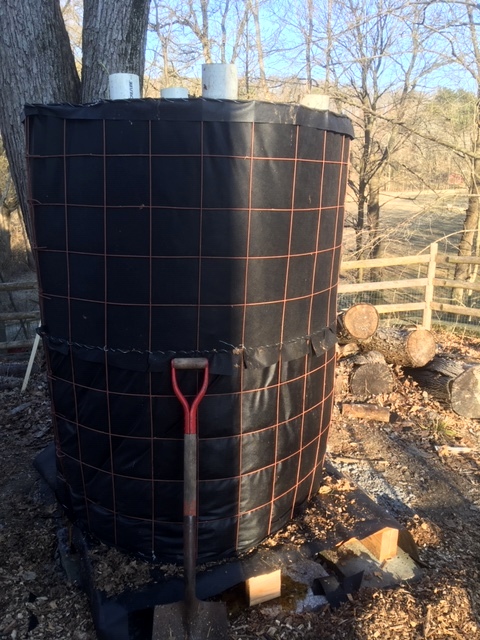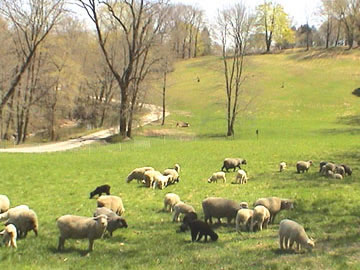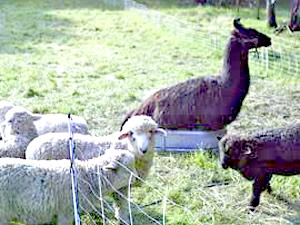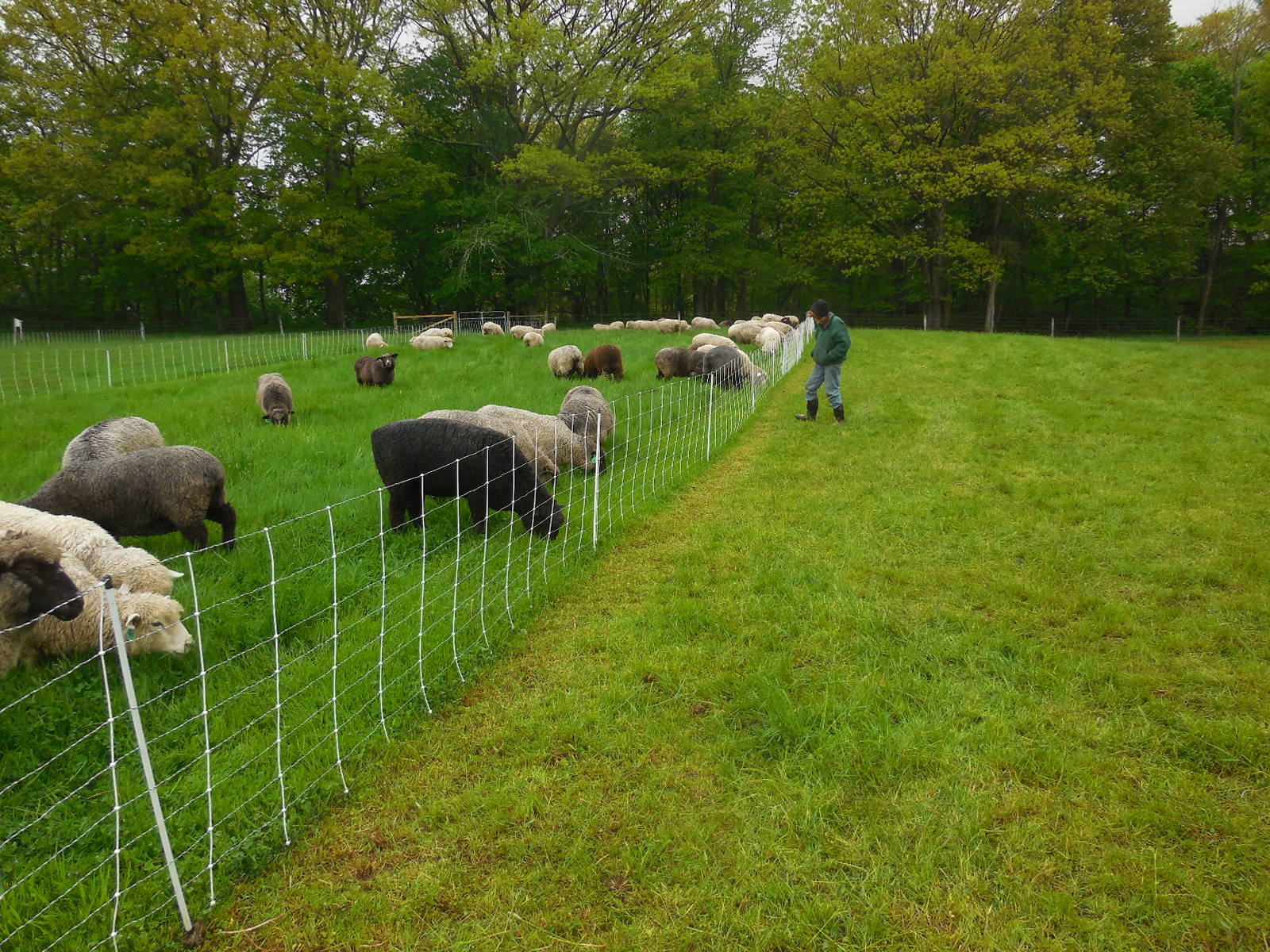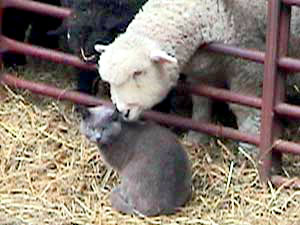Part 1. What is a “carbon footprint” and how do we use it? First in the series, directly below
Part 2. Comparing the carbon footprints of world and American agriculture.
Part 3. Fossil Fuels in the Carbon Footprint of American Agriculture
Part 4. Carbon Tax
Part 5. Carbon foodprints in American agriculture
Part 6. Carbon-sequestration and storage-in-soil/
Abstract I define the terms “carbon footprint,” “greenhouse gas,” “global warming potential” and “CO2 equivalent.” An illustration of two different imaginary activities with the same carbon footprint in metric tons CO2-e/yr shows the use of breaking down a carbon footprint for an activity or sector to see the relative contribution of the three major greenhouse gases to the whole.
Introduction What is a “carbon footprint” and how do we use it?
Knowing the “carbon footprint” of an activity helps to see how it might be shrunk to reduce the pace of global warming. It also predicts the impact on that activity of a proposed fee on carbonaceous raw materials like oil. I will delineate the carbon footprint of agriculture in the USA after pinning down four terms not always sharply defined. “Carbon footprint” tallies emissions of “greenhouse gases.” Its magnitude is typically expressed as the gases’ joint effect of heat-trapping, transformed into a mass called “CO2-equivalent.” The value of CO2-e is derived from Global Warming Potentials. A few words on these terms.
A carbon footprint belongs to a specified geophysical or operational unit of observation that can be big (e.g. Planet Earth, a nation, a sector of the economy, an industry, a city) or be a small business or a single household. It may be a quantity like a ton of wheat. The footprint represents the heat-trapping effect of the combined releases of greenhouse gases (GHGs) to the air from producing or operating that unit. GHGs in the atmosphere prevent re-radiation of infra-red energy from our planet into space. They act as greenhouse glass does to trap solar heat, warming the air inside; thus the name “greenhouse gases.” The principal GHGs are as follows in order of abundance: Water vapor (H2O), Carbon dioxide (CO2), Methane (CH4), Nitrous Oxide (N2O), Ozone (O3), and Chlorofluorocarbons (CFCs), hydrofluorocarbons (HFCs), sulfur hexafluoride (SF6), hydrochlorofluorocarbons (HCFCs), perfluorocarbons
As is recognized by nearly all scientists, GHGs have been accumulating in the atmosphere in the last several hundred years. Their growing presence threatens the health of terrestrial life. For more background, see Appendix 1 in the <click here to read more> section at the end of this text.
The greenhouse gases most germane to “carbon footprint” are carbon dioxide (CO2), methane (CH4) and nitrous oxide (N2O). Water vapor causes up to 60% of heat-trapping in the atmosphere but is a passive vehicle driven by warming due to the other three gases and will not be considered further here. Each of the other three has a characteristic capacity to block infra-red radiation (IR) from escaping back into space.. Take methane: averaged over a 100 year span, a kg of methane released this year will stop about 34 times as much outbound infra-red radiation (IR) as a kg of CO2 emitted this year. Over that same span, a kg of N2O will prevent the escape of about 300 times as much IR as a kg of CO2. A ratio like 34:1 or 300:1, simplified to a value like 34 or 300, is the Global Warming Potential (GWP) of that gas.
Multiplying the emitted physical tonnage of each of the three major greenhouse gases by its global warming potential, then summing the products, yields “CO2 equivalent (abbreviated CO2-e)” in which a carbon footprint is typically expressed.
For example, imagine facility A that releases one metric ton (mt)/yr of CO2 + .04 mt/yr of methane (CH4) + .01 mt/yr of nitrous oxide (N2O). Its carbon footprint is 1*1 + .04*34 + .01 + 298 = 1 + 1.36 + 2.98 = 5.34 metric tons of CO2-e/yr.
Now picture facility B with annual releases as shown in Table 1. 1
Facility CO2 mt/y CH4 mt/y N2O mt/y CO2-e mt/y
A 1 .04 .01 5.34
B 4.87 .01 .001 5.34
Table 1.1 Calculating the carbon footprint for two imaginary facilities
Both A and B have a carbon footprint of 5.34 mt CO2-e/yr. When each tries to lower its footprint by (say) 20% in two years, they will need different approaches. A carbon tax would hit B much harder. Today there is no plan in any carbon tax proposal to fee methane releases from agriculture, nor nitrous oxide releases related to synthetic nitrogen fertilizers.
Earlier I noted there is no universal and precise definition of the “carbon footprint” that fits every socio-economic or geophysical unit. For example, a personal calculator from Great Britain strongly emphasizes fossil fuel burning (a CO2 emitter) in transportation and electricity generation, omitting CH4 and N2O.
Indirect emissions of all GHGs are usually ignored in household and small business calculators. An eye-opening report from MIT concluded, however, that when indirect emissions from municipal, state and federal services are counted, the carbon footprint of the most sedentary and ascetic person in the US is double the global average of 4 mt CO2-e/yr. Some household calculators allow carbon offsets for persons who own trees or have planted them to buy offsets; some do not.
Thus the carbon footprint for any unit of observation from nation/yr to a package of food will depend heavily on the boundaries of the analysis. We will see in a later essay of this series that much of the fossil fuel burnt by farmers and ranchers directly is not charged in macroanalysis to “agriculture,” but to “transportation.” Nor are emissions from fossil fuels combusted to generate electricity used on ranches and farms charged to “agriculture.” Even when these sources of CO2 release are reclassified, however, the heat-trapping effect of actual CO2 from agriculture is not much compared to that of CH4 and N2O. IT is more like facility A above.
“Carbon footprint” is an odd term in that nitrous oxide, an important component of agriculture’s carbon footprint, has no carbon. The term denotes a quantity that could be more accurately, though less understandably, be called “contribution to radiative forcing.”
The next essay, second in the series, looks at the carbon footprint of agriculture in the world and in the USA.
Click here to continue to Appendix
Appendix 1
Some greenhouse gases, like the chlorofluorocarbons and hydrofluorocarbons, are entirely made by human activity. The others have been in the atmosphere for millions of years but owing to human activities are now more prevalent than before the year 1750. Carbon dioxide has risen in a nearly straight line by 44% since 1750. Methane levels rose 13% 1749-1852; by another 40% over the next century, and by another 62% from 1950 to 2015. Nitrous oxide levels, stable for centuries, climbed 7% between 1745 and 1954, then by another 14% to 2015. Ozone is the exception. It was being depleted by the scarce super-potent GHG chlorofluorocarbons until the downslope was halted (to wide relief) by their decreased use in the 1980s. The sixth group includes several score gases, scarce even put together, all dating from the past hundred years. They were used in aerosols, refrigerants and fire-extinguishers. Their use is on the way out, but most will persist a long time.
Excluding water vapor, the “greenhouse gases” comprise altogether less than a tenth of one per cent of all gases in the atmosphere, in which nitrogen (N2) is the largest component (roughly 78%). Oxygen (O2) makes up roughly 20%, and argon about 0.9% . Water vapor varies from one to four per cent, depending on factors like season and latitude. It may seem surprising that 0.1% (one part per thousand) can do so much harm, but many biological poisons are lethal at much lower concentrations.
The greenhouse gases most pertinent to “carbon footprint” are carbon dioxide (CO2), methane (CH4) and nitrous oxide (N2O). Each of these has a characteristic capacity to block infra-red radiation from escaping back into space, trapping heat in the atmosphere. Take methane: averaged over a 100 year span, a kg of methane released this year will stop 25-35 times as much outbound infra-red radiation (IR) as a kg of CO2 emitted this year. Over that same span, a kg of N2O will prevent the escape of about 300 times as much (IR) radiation as a kg of CO2.
The ratio of IR blocking ability of a GHG to that of CO2 is that GHG’s Global Warming Potential (GWP). Figures for GWP are not set in stone. See Table 1.2.
100-yr GWP 4th AR IPCC 100-yr GWP 5th AR IPCC
- Water vapor H2O varies varies
- Carbon dioxide CO2 1 1
- Methane CH4 25 34
- Nitrous Oxide N2O 298 298
- Ozone O3 ? ?
- Halocarbons et al many in thousands many in thousands
Table 1.2. Global Warming Potentials (GWPs) for greenhouse gases presented in two different reports by the International Panel on Climate Change (IPCC).





















